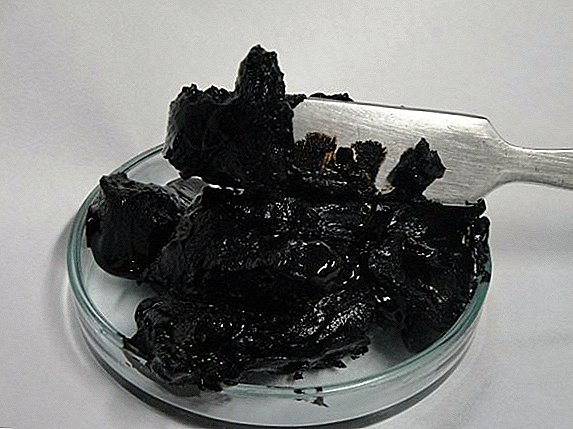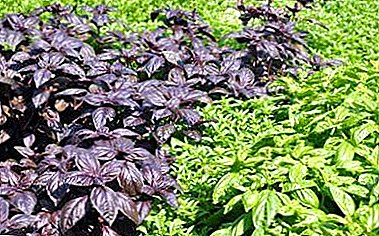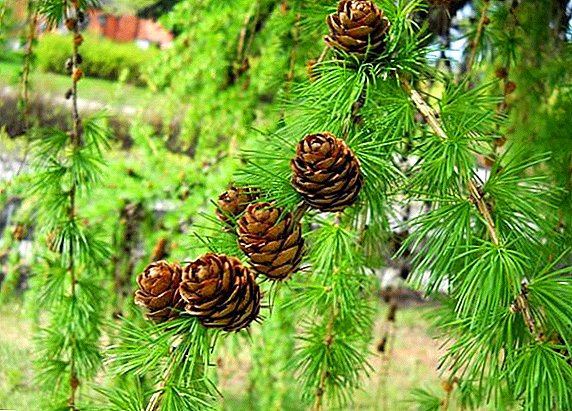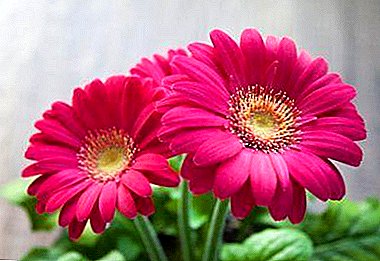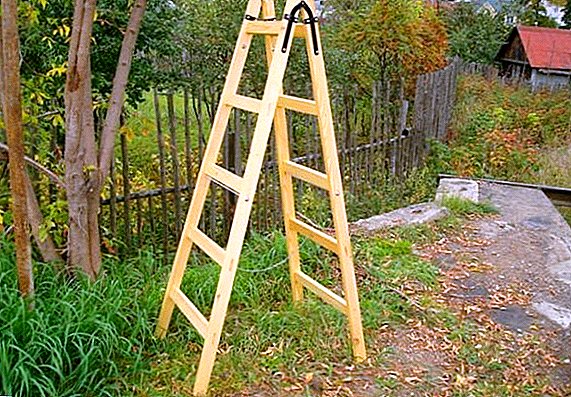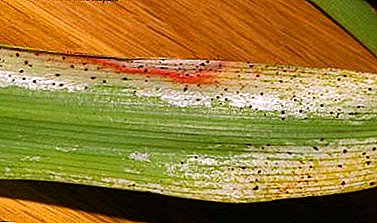
The appearance of pests on a flower grown with love is a disaster for any grower. And it is also a reason to remember that caring for a plant is not limited only to watering and feeding, it is also the prevention and control of insects.
One of the most dangerous parasites of indoor and ornamental crops is flower thrips and, despite its small size, this pest is capable of causing tremendous harm.
General provisions
Floral or western flower thrips, also called Californian, are small, rarely exceeding 1.5 mm in length, and insects with a huge appetite, from a group of thrips that consists of many species. Photos and descriptions of thrips can be found here.
 For the first time this species, Frankliniella occideantalis, was described by the American entomologist Theodore Perganda in 1895. Flower thrips, very dangerous parasites that feed on plant sap, active in the dark and daytime, preferring to hide under the leaves, in flower buds or in the upper layers of the soil.
For the first time this species, Frankliniella occideantalis, was described by the American entomologist Theodore Perganda in 1895. Flower thrips, very dangerous parasites that feed on plant sap, active in the dark and daytime, preferring to hide under the leaves, in flower buds or in the upper layers of the soil.
Thrips has several stages of development. The female lays in leaves, flowers or stems up to 300 eggs, developing 2 to 4 days at a temperature of + 25 ° C and up to 11 days at + 15 ° C. The first two larval stages feed on the surface of the leaves, two more, go under the surface of the soil, closer to the roots, where after 2 - 3 days, an individual capable of breeding appears.
Western thrips is widespread and due to trade, introduced to almost all countries and continents, and although it is most popular with the average latitudes of subtropics, it also lives in other climatic zones where there is not much humidity and too low temperatures. In Russia, the pest is included in the list of quarantine objects with limited distribution.
Where do they come from?
In the warm season, thrips can be brought into the house from the street., cottages, together with a bouquet of peonies or roses, to which they have a special weakness. They can fly themselves, for example through a balcony from a flower garden located under the windows. You can bring an insect in a bag, on clothes or a bunch of any greenery that falls under the almost unlimited ration of thrips, as well as with acquired ornamental plants, where they can hide in the soil, in buds or at the very inflorescences.
How to recognize them?
Pest recognition is pretty easy. Trips has an elongated body, thin legs and extraordinary mobility. Coloring is yellowish or light brown, males and females of the same size. Like most insects parasitizing on plants, thrips have piercing-sucking oral apparatus capable of piercing the skin of the leaf and getting to the juice.
Adults have wings, they are able to make very long flights and easily jump from one plant to another. The larvae are almost indistinguishable from mature individuals, they are smaller, up to 1 mm, they have no wings, the legs are not so mobile and shortened, and the color is lighter.
To detect insects on a houseplant can be on the leaves, in buds and soil, as well as on products of their vital activity - small black points. The most obvious feature of the fact that the plant is infected, will serve as harm caused by flower thrips.
Harm and features of the fight
Common signs of infection:
- Formation on the surface of the leaves of small dark, or discolored dots - traces of insect prokus, dying off after losing cell sap.
- Premature wilting, warping of stems and leaves, deformation or too small size of blooming flowers and tying buds during the growing season.
- The presence of traces of pest life - silver spiderweb or white plaque, preventing normal photosynthesis.
- The appearance of a dashed mesh, connecting in solid brown or brown spots, forming dips, causing drying and dying of leaves and buds.
Important: In addition to the direct harm inflicted by the parasite and its larvae, they also carry dangerous viral diseases affecting plants.
The danger lies in the fact that thrips multiply very quickly on flowers, and with the growth of the population, the probability of death of the plant increases. If time does not take measures to destroy the pest, the flower may die, and after finishing with one, the thrips will immediately go to the next. On how to deal with these insects, we described in detail in this article.
Violet
 Violet struck with flower thrips dries almost immediately. This is especially dangerous because, because of its structure, it is possible to detect the presence of insects already in the death state. Violet suffers mainly from larvae affecting the anther, which leads to wilting of the buds that are not blossoming and hinders the ovary of new ones.
Violet struck with flower thrips dries almost immediately. This is especially dangerous because, because of its structure, it is possible to detect the presence of insects already in the death state. Violet suffers mainly from larvae affecting the anther, which leads to wilting of the buds that are not blossoming and hinders the ovary of new ones.
Signs:
- leaves fall;
- traces of drying may occur;
- edges are twisted;
- from the opened buds pollen is intensively showered.
The fight against insects attacking violet begins with the quarantine of an infected plant.
- It is separated from others, preferably in a room without any greenery.
- After isolation, the violet is treated with a solution of an insecticide designed specifically for flower thrips and covered with a plastic bag.
- After the day has passed, the bag is removed, and leaving the flower in isolation continues the usual care.
- After two weeks, the procedure is repeated to get rid of possible surviving larvae.
Ficus
On Benjamin Ficus, in the presence of thrips, leaves start to turn yellow, over time, dry up and fall off. Without the possibility of obtaining nutrients, the plant itself dies. For the destruction of the parasite using insecticides, which several times spray the leaves after a certain period of time.
the Rose
On roses, most often thrips lodge in unblown buds, feeding on their cell sap and leading to the fact that the flowers do not bloom and dry quickly.
To fight the pest on garden roses, the plant’s root system is treated with a chemical solution once every 10-14 days. It is forbidden to spray flower buds growing in the garden, because all insecticides are poisonous for bees as well. In the case of a room rose, there are no such restrictions, and its buds are treated on a par with the roots, but the most effective is the spraying of the roots. Infected flowers are also pruned, which reduces the number of insects and the rate of population growth.
Phalaenopsis
Orchid thrips cause the same damage as most plants. Phalaenopsis leaves are covered with a thin film, fade and die. Damaged flowers and roots.
- before applying poison, the orchid is “bathed” in warm water;
- remove damaged areas of the parasite;
- sprinkle several times, repeating the steps every 10 days until phalaenopsis has recovered.
You will learn more about where the thrips in the orchid come from and how to deal with them, you will learn in a separate article.
Cyclamen
Cyclamen, which has come under the impact of pests, along with the usual symptoms, is also characterized by a twisting of the leaves upwards. Destroy insects, as is the case with the orchid:
- warm shower is used;
- not only the damaged areas are cut off, but all the leaves and flower stalks affected by the parasite;
- after which the cyclamen is washed, dried and subjected to treatment with insecticides 2 - 3 times a week.
If cyclamen seeds are infected, flower thrips can be passed along with them.from where are selected at high temperature and low humidity. Such conditions are most favorable for their reproduction.
A photo
The photo shows flower trips in various colors, you can see how it looks on Benjamin's ficus, violet, rose and other indoor plants.



Prevention
General methods of dealing with Western floral thrips come down to a number of rules. This is a quarantine of an infected plant, while it is important to bear in mind that insects can jump from an isolated flower to a neighboring one when it is shaken.
After isolation, the next colors are examined., on the subject of migrated individuals and deposited larvae feeding on the underside of the leaves. In the affected plant, the removal of the top layer of soil is considered to be superfluous. After all checks, insecticides are used, for example:
- Fitoverm.
- Virtimek.
- Aktilik.
- Carboform.
- Intavir and others
In more detail about how to deal with thrips, was told in this material.
Preventing the appearance of the parasite is a regular inspection, periodic shower, and hanging sticky traps, which helps to detect the presence of insects in a timely manner.
Conclusion
Flower thrips - ruthless enemy. In order not to miss the moment of its appearance and not to catch the plant on the verge of death, it is worth remembering: it is much easier to prevent a war with a pest than to deal with its consequences, but if thrips still get into the house and choose a victim, act immediately.


